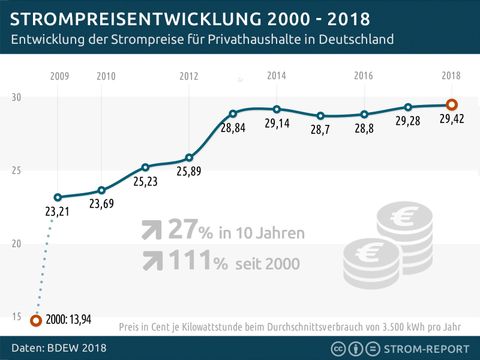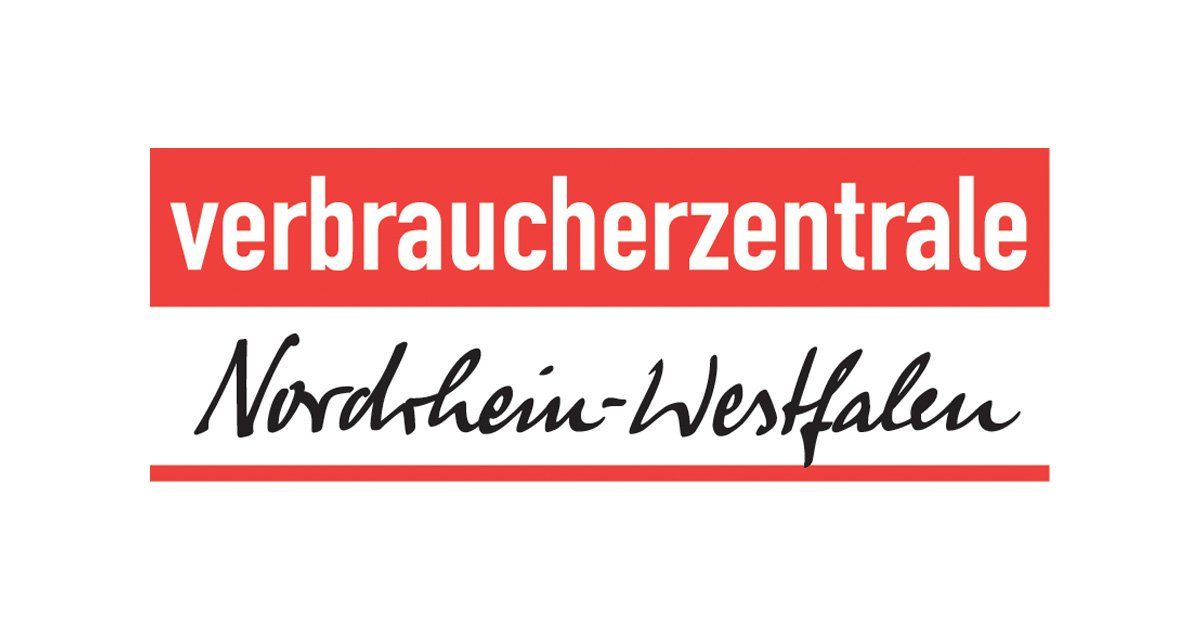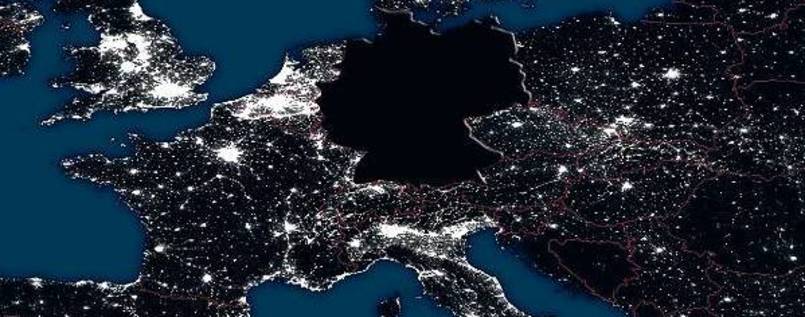Blog
Expand Horizons - SSE Sun Facts
Electricity price development for private households 2000 - 2018
Electricity prices for households consuming 3,500 kWh / year

Those: https://1-stromvergleich.com/strom-report/strompreis/
The electricity price for private households in Germany has been on an upward trend for years, reaching the record high of 29.42 cents per kilowatt hour [cents | kWh] at the beginning of 2018. At the turn of the millennium, the price of electricity in Germany was 13.94 cents per kilowatt-hour, an increase of 111% or 6% per year.
Link to article
Although network charges and the EEG surcharge fell slightly at the turn of the year, costs for the electricity supplier [procurement and sales] are rising again for the first time due to rising wholesale prices. 50 basic utilities have already increased their electricity prices, including EnBW. A further rise in the price level is expected by the end of the year.
Source: Electricity Report / BDEW
Clear regulation on the EEG levy obligation!
EEG - on the way to the competition
Since 1 January 2017, the amended Renewable Energy Sources Act (EEG) has been in force. The most recent EEG amendment represents a fundamental change in the funding system - a paradigm shift: The German government wants to move away from the state-fixed feed-in tariffs for electricity from renewable energy plants. Instead, the remuneration for electricity from photovoltaic, wind energy and bioenergy plants, which is fed into the public grid, will be determined competitively through tenders.
For the operators of small photovoltaic rooftop systems, however, there is good news. The tendering procedure applies only to PV systems on an industrial scale.
- For solar power systems up to 750 kilowatts of power, the old conveyor system continues to apply.
- Photovoltaic systems with a capacity of up to 10 kilowatts, as is usual on residential buildings, are still exempt from the EEG surcharge.


EEG surcharge for self-consumed solar power
Since 1 August 2014 applies: For photovoltaic systems over 10 kilowatts of power or self-consumption above the threshold of 10 MWh / a (= 10,000 kWh / a) must bepaidfor the self-consumed solar power a pro-rata EEG apportionment. The apportionment was gradually increased.
Since January 1, 2017, 40 percent of the respective EEG surcharge has to be paid.
A derogation applies to investments that fall under the so-called de minimis limit.As such, photovoltaic systems with a capacity of up to 10 kilowatts or the first 10 megawatt hours of * self-consumption per year (MWh / a) apply. You are exempt from the EEG surcharge.
(* 1 MWh = 1,000 kWh)
Source: https://energie-wissen.de/eeg/
Press article "Balcony" PV solar system
Plug-and-play for the energy revolution
Mini photovoltaic systems for connection to sockets (plug PV)
Source: Verbraucherzentrale NRW
So fatal would be a cyberattack on the global power supply
Press release Welt.de 29.09.2016:
The transformation of the German power supply through the so-called energy turnaround has two faces here: Because the importance of central large power plants is decreasing and small, decentralized supply structures with wind power and PV systems are becoming more important, the overall system is less susceptible to cyberattacks.
Link to article
On the other hand, the energy turnaround also means digitization: The Federal Government has just made the installation of digital electricity meters mandatory for certain building classes. This in turn increases the opportunities for cyberterrorists to spread computer viruses widely in the power grid. It is not by chance that Elsberg's thriller is based on a scenario in which hackers use the "smart meters" of private houses as an entry point for their attack.
Especially in a high-tech country such as Germany, where the energy system with the statutory expansion of digital meters from 2017 is becoming increasingly intelligent, cyber attacks are an important issue, "said Uwe Franke, President of the World Energy Council Germany, at the Berlin conference. "But we have very high security standards that can be exemplary for other countries."
Source: Welt.de
Further press releases
Cyber attacks on electricity supplier
Experts warn against hacker attacks especially on companies in the energy industry. The lack of IT security among utilities creates an increasing risk of power outages.
Source: FAZ
Electricity price composition 2018
Average electricity price for private household customers in Germany

Source. "Electricity price composition 2018" / Average electricity price for household customers in Germany: Electricity Report
The electricity price for private consumers averaged 29.42 cents per kilowatt-hour at the beginning of 2018, up 0.9% on the previous year.
Link to article
This consumer electricity price consists of 3 main components:
- 54.3% for state-imposed taxes, levies and levies.
- 24.7% for the use of electricity grids, which the network operator gets.
- 21% for power generation and distribution, which the electricity provider receives.
The government burden on electricity prices in 2018 will be slightly below the level of the previous year [-0.7% in 2017]. Taxes, duties and levies have gone up from 8.96 cents to 15.97 cents in the last 10 years, up 78%. [since 2000 + 207%]
The largest part in the area of "taxes and duties" is the EEG surcharge of 23.1%. It has dropped 1.3% this year and has been 6.79 cents per kilowatt-hour since January 1st. [10 year history + 418%]
The second largest cost block in the price of electricity is caused by grid charges. They currently achieve a share of 24.7%. The increase of 27% in the past 10 years is justified by the necessary grid expansion in the context of the energy turnaround. Compared to the previous year, grid usage fees fell by 3.2% in the federal average in 2018, although the figures vary greatly in the individual supply areas.
The electricity supplier's share of electricity generation grew by 8.2% this year. Procurement and distribution costs are rising for the first time since 2012 due to rising wholesale prices. [10-year history -27%]
Source: Electricity Report / BDEW

Source: https://1-stromvergleich.com/strom-report/strompreise-europa/#strompreise-europa-2015
Electricity in Germany in a European comparison for household customers
Electricity prices in Europe have been on an upward trend for years, with prices for household customers growing faster in many countries than in the rest of Europe.
Link to article
The graph and the dossier shed light on the development of electricity prices for private consumers by 2015. Prices for household customers include taxes and duties and were calculated for an annual consumption of between 2,500 and 5,000 kilowatt hours.
According to this, consumers in Denmark have been spending most of their money on electricity for years, because that's where the kilowatt hour costs 30.7 cents / kWh. Closely behind, occupying second place in the Eurostat ranking, is Germany with 29.5 cents / kWh.
This means that electricity is more than 3 times more expensive for the two leaders than for Bulgaria (9.4 cents / kWh). Italy and Ireland occupy places 3 and 4 of the most expensive countries in Europe. Spain falls into fifth place because prices there have declined somewhat in 2014. Where prices will rise again in 2016.
Source: Eurostat / Strom-Report / BDEW









